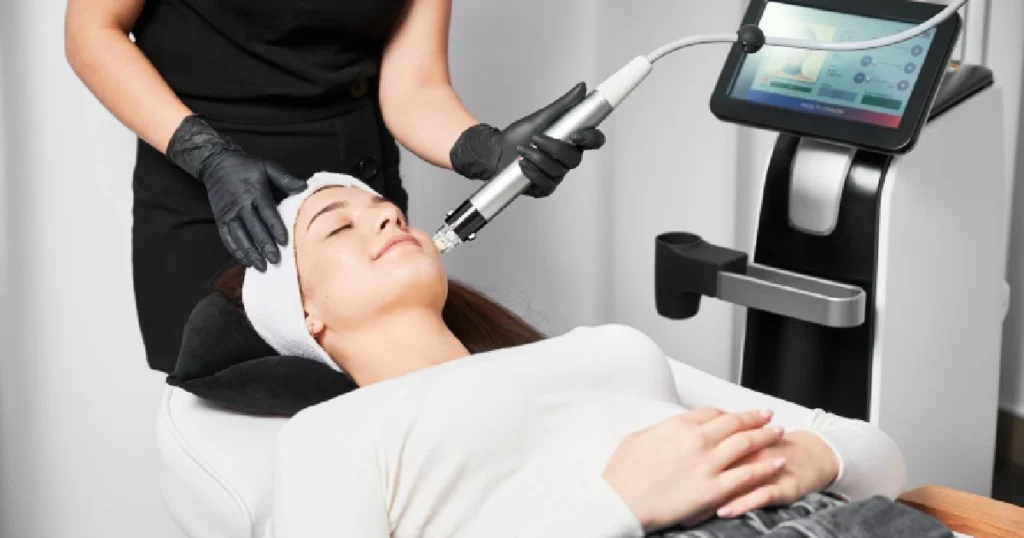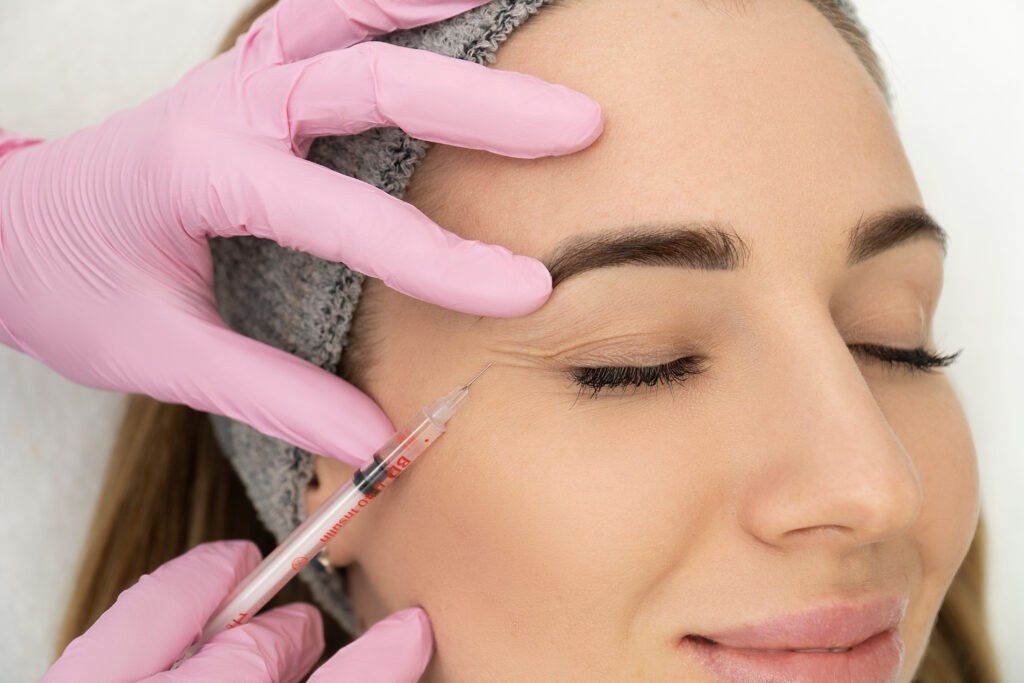Table of Contents
Neurotoxin treatments have become a reliable method for smoothing out wrinkles, minimizing expression lines, and achieving refreshed skin without surgery.
But the real key to achieving long-term, natural-looking results lies in knowing how often Botox and similar neurotoxins should be administered. The right timing ensures you get the most from every treatment and maintain a consistent appearance over time.
In this guide, we explore what factors influence the Botox schedule, the differences among top brands, how individual biology plays a role, and what patients can expect when receiving neurotoxin treatments.
Recommended Frequency for Neurotoxin Injections
Most patients benefit from neurotoxin treatments every 3 to 4 months. This still depends on individual factors like muscle strength, metabolism, and desired outcome.
There is no universal rule for how often Botox or other neurotoxins should be administered. However, we can refer to some evidence-based guidelines:
First-time patients may require more consistent sessions during their initial year. On the flip side, long-term users may often extend intervals to every 4 to 5 months.
Now there are also what we call “preventative users.” These are patients in their 20s or early 30s. This group may only need injections 2 to 3 times annually.
Your personalized neurotoxin or Botox schedule should reflect your facial patterns. Moreover, it is influenced by your response to treatment and aesthetic goals. A skilled provider will guide you in fine tuning your Botox frequency for optimal, natural-looking results.
Understanding How Neurotoxins Work
Neurotoxin treatments specifically target facial muscles responsible for repetitive expressions. These are the known root causes of dynamic wrinkles.
Th injecting small amounts of purified botulinum toxin into these muscles, the signal between the nerve and muscle is temporarily interrupted. This controlled muscle relaxation softens visible wrinkles and prevents the formation of new ones.
Commonly treated areas include:
- Forehead creases
- Glabellar lines (frown lines between the eyebrows)
- Crow’s feet (outer corners of the eyes)
- Bunny lines on the nose
- Neck bands and chin dimpling
Comparing Leading Neurotoxins: Botox, Dysport, Jeuveau, Xeomin
Though all four FDA-approved brands possess the same active ingredient, they still differ slightly in composition, spread, and how the body metabolizes them:
- Botox: This brand is the most widely recognized. It is known for its precise targeting and consistent results, ideal for smaller areas or first-time users.
- Dysport: The next brand, Dysport, diffuses more than Botox. This effect can be beneficial for broader treatment zones like the forehead. However, it requires experienced handling.
- Jeuveau: This neurotoxin is branded as “Newtox.” It is used solely for cosmetic purposes and may deliver quicker results in some cases.
- Xeomin: This unique neurotoxin injectable contains no accessory proteins (a “naked” formula). Thus, it reduces the risk of antibody resistance over time.
Choosing the right product depends on treatment goals, muscle activity, past injection history, and how quickly results are needed.
How Long Do Results Typically Last?
The effects of most neurotoxin cosmetic injections begin to appear within 3 to 7 days post-treatment and reach full effect at two weeks. The average duration of effect ranges from 12 to 16 weeks, although this can vary.
Several factors affect how long neurotoxin results last:
- Facial muscle strength: People with expressive facial muscles may require shorter intervals
- Activity level: Athletes or individuals with high metabolic rates often metabolize injectables more rapidly
- Injection dose and accuracy: Proper dosing and targeted injection improve longevity.
- Consistency: Keeping up with a regular Botox regimen can help “train” the muscles, which may lead to longer-lasting effects over time.
The Cost of Inconsistent Treatments
Skipping treatments or waiting too long can result in:
- Return of full muscle movement: Once the neurotoxin wears off, untreated muscles resume their full activity. This means they will begin to crease the skin again.
- Reappearance and deepening of wrinkles: Without timely treatment, fine lines and dynamic wrinkles can become more pronounced. In some cases, they will become harder to soften.
- Needing higher doses in future sessions: Irregular treatment schedules may require more product to regain the same level of muscle relaxation and wrinkle reduction.
Consistency does not mean overdoing it. It means keeping up with your Botox frequency to maintain results. Patients who stay on track tend to use smaller doses and get better long-term outcomes.
Can You Get Botox Too Often?
Absolutely. Receiving neurotoxin treatments too frequently can lead to:
- Diminished facial expression (a frozen look)
- Muscle atrophy from over-relaxation
- Potential development of resistance (especially with repeated high doses or improper intervals)
A trained medical provider of our team monitors muscle response and adjusts your schedule and dose accordingly. If you’re tempted to schedule sooner than every 10 weeks, it’s likely too soon.
Patient-Specific Botox Frequency: What Influences It?
A number of factors shape how often you should get treated:
- Age: Younger patients using Botox preventively may need less frequent visits.
- Skin condition: Dehydrated or mature skin may need more support from adjunctive treatments.
- Lifestyle habits: Smoking, sun exposure, and stress can accelerate wrinkle formation.
- Genetics: Some people naturally form deeper expression lines than others.
Because of these variations, we can conclude that no two Botox schedules are identical. Regular reassessments help ensure the schedule fits your evolving needs.
Benefits of Staying on a Regular Botox Schedule
Following a consistent treatment plan has advantages beyond smoother skin:
Prevention
Ongoing use helps prevent the deepening of fine lines. By keeping muscle movement under control, it becomes easier to maintain a smoother facial appearance over time.
Efficiency
Regular sessions often require fewer units per treatment. This is because relaxed muscles are easier to manage and typically need less product to maintain the effect.
Natural look
Avoids drastic before-and-after changes. Regular maintenance allows for subtle, progressive results that look more natural than sporadic treatment.
Predictable results
You’ll know when to expect touch-ups and what your skin will look like year-round. This consistency makes it easier to plan around special events and daily life with confidence.
Patients who commit to regular Botox often experience a more rested, balanced appearance without looking “done.”
What to Expect from Neurotoxin Treatments in Cedar Park, TX
At Unique Weight Loss and Family Practice, patients seeking neurotoxin treatments in Cedar Park, TX, can expect medically guided care and natural-looking outcomes.
Our providers use FDA-approved neurotoxins, including Botox, Dysport, Xeomin, and Jeuveau. These are effective in treating expression lines across the forehead, between the eyebrows, and around the eyes.
Treatments are non-invasive, quick (typically 10–15 minutes), and require no downtime. While full results emerge in two weeks, patients begin seeing improvement within days.
For lasting effects, follow-up treatments are recommended every 3 to 4 months. It still depends on facial activity and individual response.
Frequently Asked Questions
Are neurotoxins and dermal fillers similar?
No, neurotoxins relax muscles to reduce wrinkles caused by movement, while dermal fillers add volume to smooth static lines or enhance facial features.
How long do neurotoxin results typically last?
Most people enjoy visible results for 3 to 4 months before muscle activity gradually returns.
Is there downtime after a neurotoxin treatment?
No, these treatments are quick and require no downtime, allowing most patients to return to daily activities immediately.
Can neurotoxin treatments prevent wrinkles?
Yes, starting early with consistent treatments can help prevent the formation of deeper expression lines over time.
Do I need to treat all areas of the face at each appointment?
Not necessarily—your provider may recommend focusing on specific areas based on your goals and facial movement.






